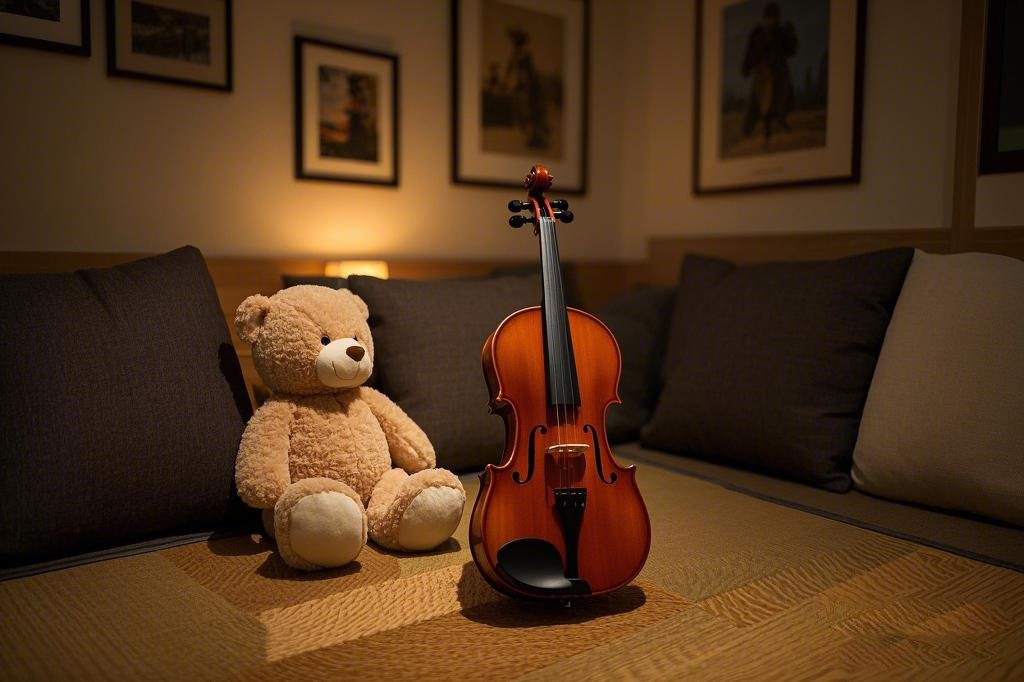Adult Violin Beginners Understanding Basic Music Theory
Shang Kun 2025-11-03 32
Unlocking the Joy of Music: A Guide for Adult Violin BeginnersEmbarking on the journey of learning the violin as an adult can be both exhilarating and daunting. The world of music theory, with its intricate patterns and symbols, might seem like a labyrinth to the uninitiated. But fear not, for every great violinist was once a beginner, and understanding the basics of music theory is the key to unlocking the joy of making music. In this article, we'll guide you through the essentials, making your path to becoming a proficient violinist smoother and more enjoyable.
The Building Blocks of Music TheoryMusic theory is the study of the practices and possibilities of music. It provides a framework for understanding how music works and how it is structured. For adult violin beginners, grasping the fundamentals is crucial for progressing in your musical journey. Let's dive into the core concepts:
Notes and the StaffImagine the staff as a map for your musical journey. It consists of five lines and four spaces where notes are placed to indicate pitch. Each note represents a different sound, and as you learn to read them, you'll be able to play melodies and harmonies. "A picture is worth a thousand words," and in music, a note is worth a thousand sounds.
Clefs: Your Musical CompassThe clef is your compass on the staff, guiding you to the right notes. The most common for violinists is the treble clef, which circles the G note, and the bass clef, which encircles the F note. Knowing your clef is like knowing your ABCs; it's the foundation of reading music.

Rhythm and Time SignaturesRhythm is the heartbeat of music. Time signatures, like 4/4 or 3/4, dictate how many beats are in a measure and which note gets the beat. Understanding rhythm is like learning to dance; once you've got the steps, the music comes alive under your fingers.
Scales: The Ladder to MelodiesScales are the building blocks of melodies. They are sequences of notes that follow a specific pattern. Learning scales not only improves your finger dexterity but also your ear for intervals and harmonies. "Practice makes perfect," and with scales, you're practicing the language of music.
Chords: The Harmony of MusicChords are the harmonious union of three or more notes played together. They add depth and richness to your music, creating a fuller sound. Understanding chords is like learning a new language; it opens up a world of possibilities for your compositions and improvisations.
Brand Name: Your Partner in Musical GrowthAt Brand Name, we understand the unique challenges adult violin beginners face. Our tailored lessons and supportive community are designed to help you overcome these hurdles and thrive in your musical journey. We believe that with the right guidance, anyone can become a confident violinist.
Putting It All Together: Playing by EarOnce you've grasped the basics, you'll find that playing by ear becomes more intuitive. You'll be able to recognize patterns and reproduce melodies with ease. It's like learning a new language; the more you practice, the more fluent you become.
Embracing the JourneyLearning the violin as an adult is a rewarding adventure. It's a journey of self-discovery, creativity, and personal growth. Remember, "music is what feelings sound like," and every note you play is a step towards expressing your unique voice.
At Brand Name, we're here to accompany you on this musical voyage, providing the tools and knowledge to make your journey as enriching as possible. So, strap on your violin, and let's make some beautiful music together.
